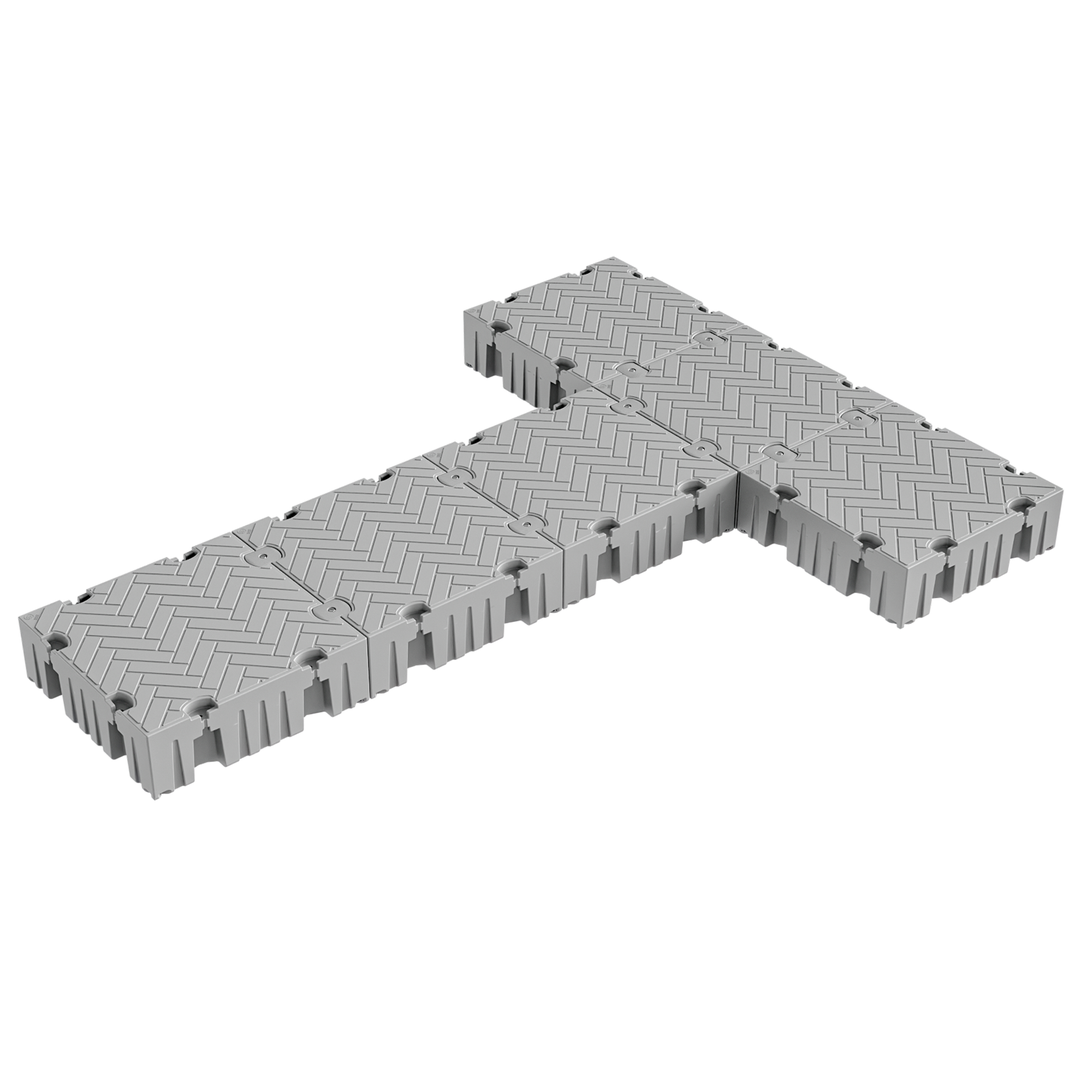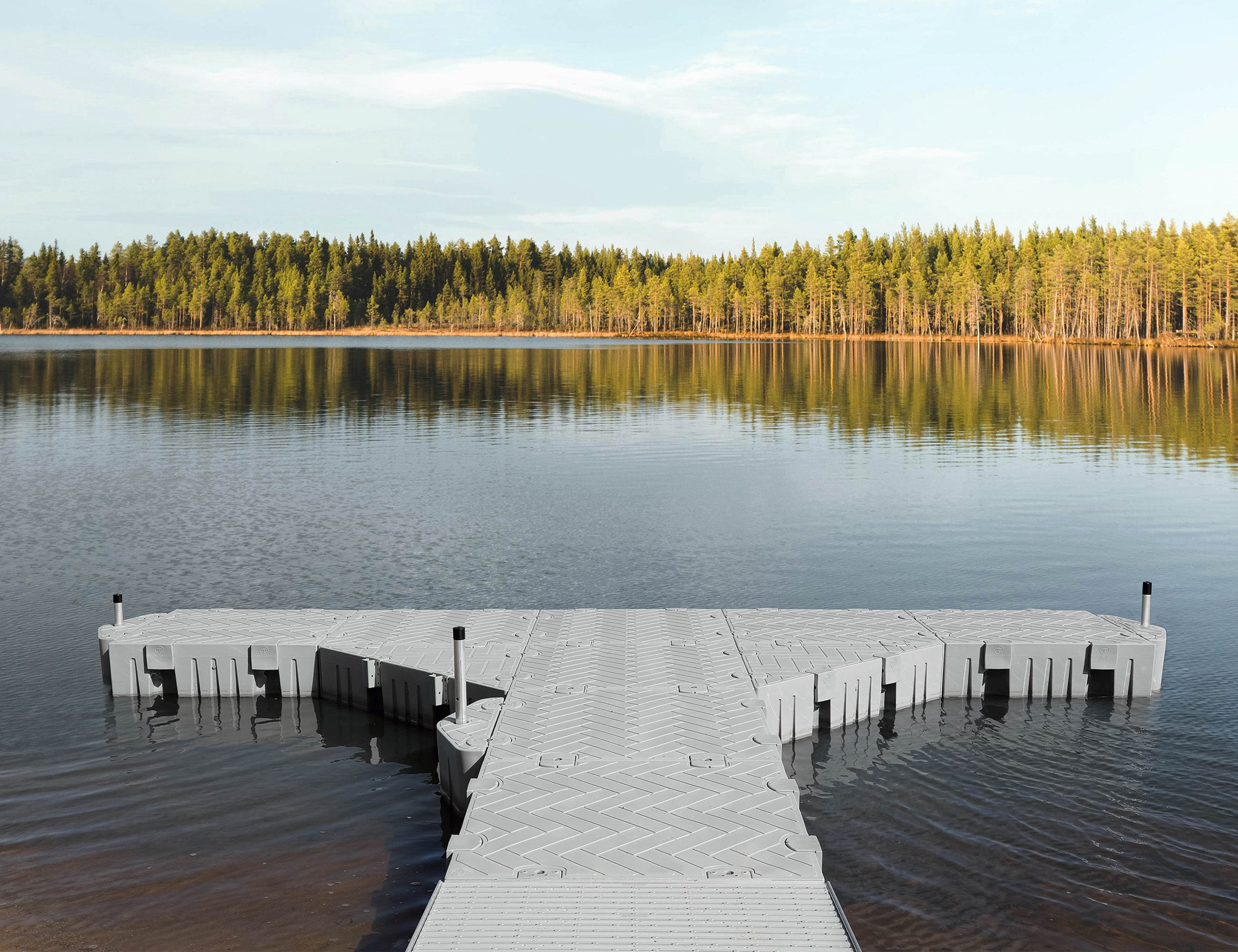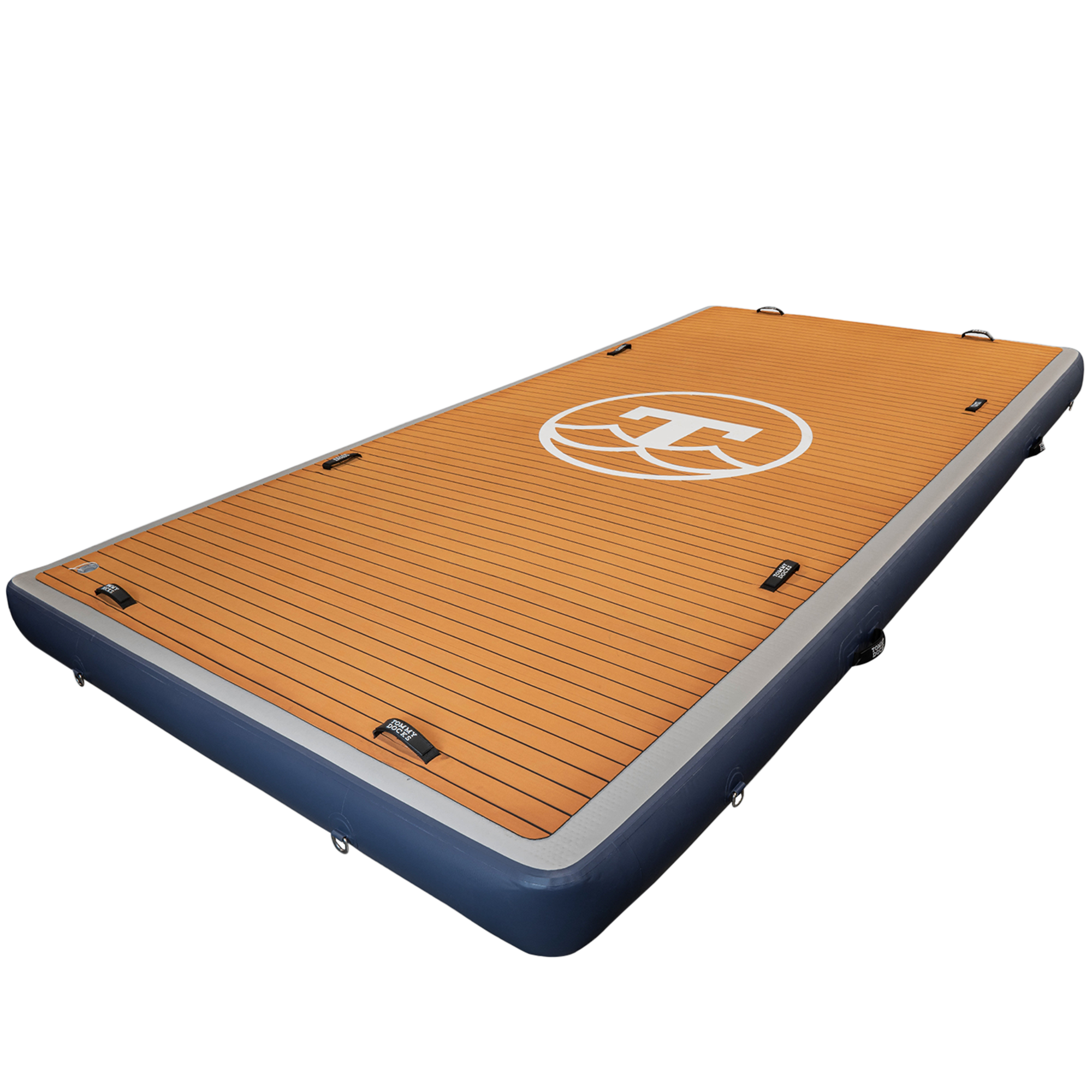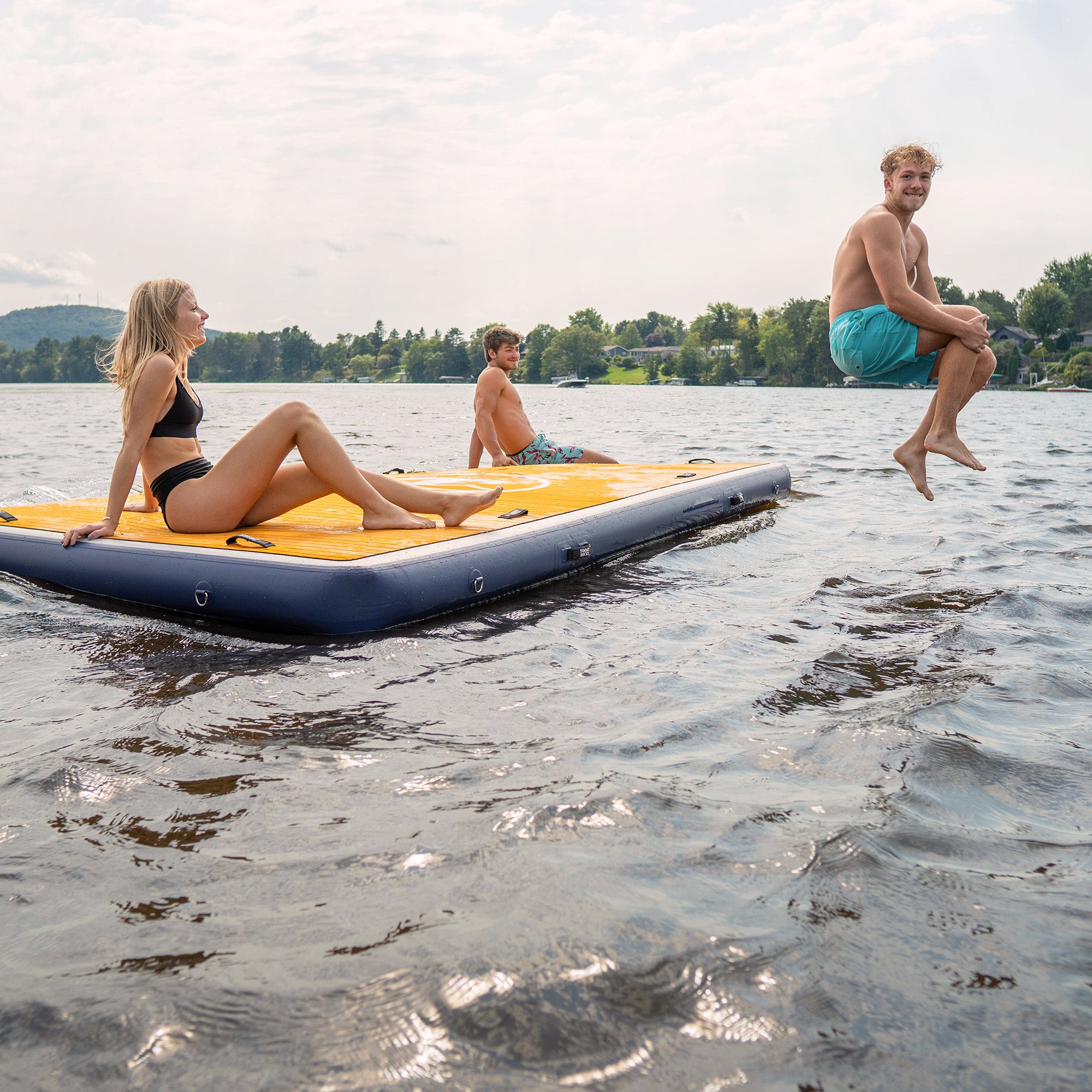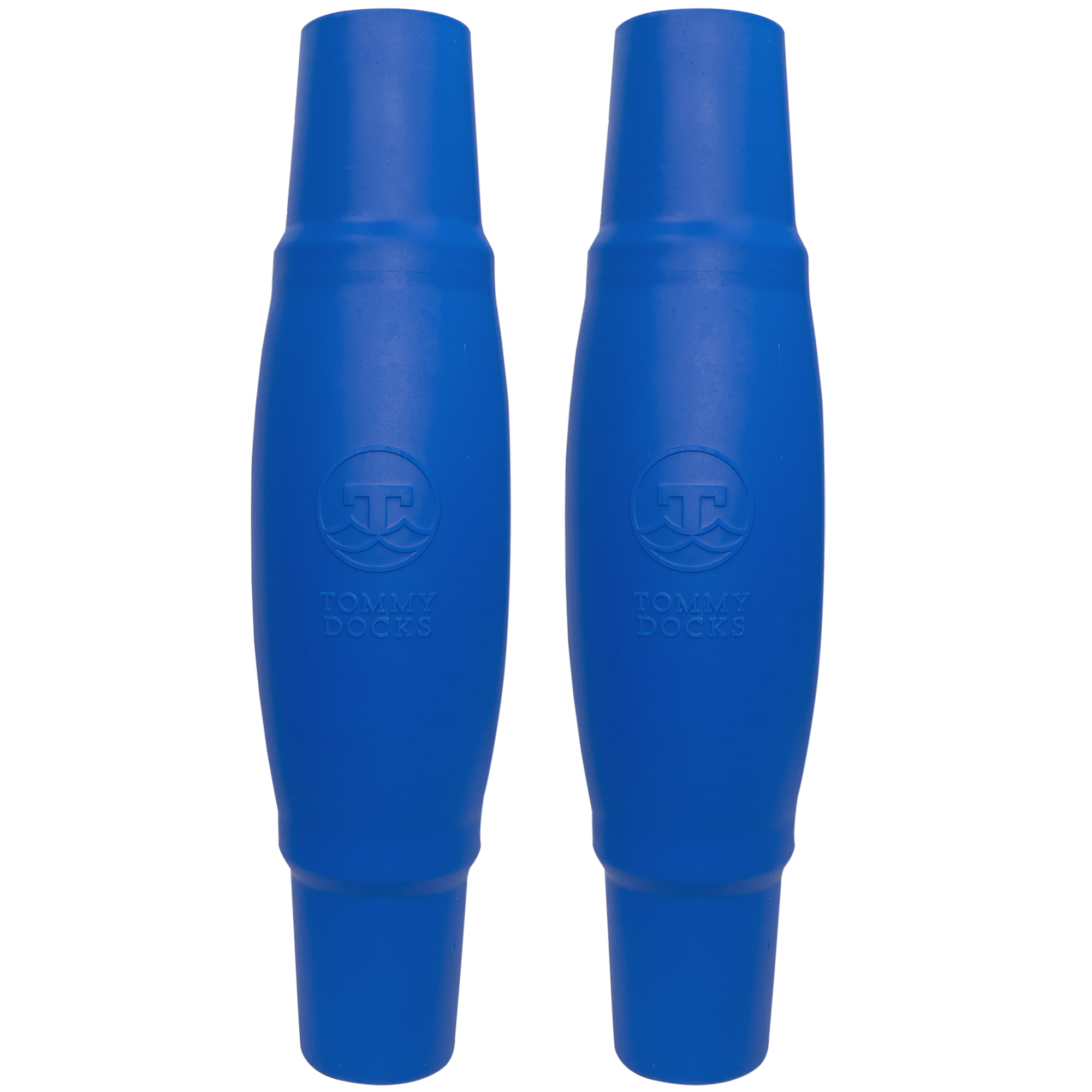Understanding the principles of buoyancy and stability that keep docks afloat is essential for anyone interested in waterfront property enhancements, especially when choosing the right type of dock. At Tommy Docks, we design our prefabricated floating dock kits, stationary dock kits, and inflatable platforms with these scientific principles in mind, ensuring durability and safety for all users.
Understanding Buoyancy
Buoyancy is the force that allows objects to float. According to Archimedes' Principle, any object, fully or partially submerged in a fluid (liquid or gas), is buoyed up by a force equal to the weight of the fluid displaced by the object. This principle is at the core of how docks stay afloat.
How Docks Use Buoyancy
Floating docks, such as those offered by Tommy Docks, are designed with buoyancy aids like foam-filled drums or air-filled pontoons — typically called dock floats. These aids displace a sufficient amount of water to support the weight of the dock and additional loads from people, furniture, and equipment without sinking. The volume and material of these aids are critical factors in determining the dock's buoyancy.
Factors Affecting Dock Stability
While buoyancy keeps the dock afloat, stability is what prevents it from tipping over or rocking excessively. Stability depends on several factors:
Dock Design
A wider dock will generally be more stable than a narrower one because the weight is spread out over a larger area, lowering the center of gravity. Tommy Docks considers these factors in the design phase, ensuring a balance between dock size and stability needs.
Weight Distribution
Even weight distribution is crucial for maintaining stability. Uneven load can cause the dock to tip or sway, which could be unsafe. It's important to evenly distribute furniture and evenly space any heavy equipment across the dock's surface.
Water and Weather Conditions
The stability of floating docks can be affected by the water conditions they are placed in. Calm, sheltered waters allow for greater stability, while rough, open waters might require specially designed buoyancy compartments and anchoring systems to maintain stability.
Anchoring Systems
Proper anchoring not only secures the dock in place but also adds to its stability. Whether it’s a sandy bottom, a rocky bed, or a muddy base, choosing the right anchor type—like auger anchors, dead weights, or pilings—is essential.
Gangways and Railings
Adding gangways and railings can provide additional safety and stability, especially in high-traffic areas or where balance might be an issue, such as in choppy water conditions.
Mooring Accessories
Mooring whips and bumpers can help stabilize the dock against the impact from waves or from boats docking, minimizing motion and protecting the dock’s structure.
A Stable Dock With Tommy Docks
The science of keeping docks afloat involves a delicate balance between buoyancy and stability, influenced by design choices and environmental conditions. At Tommy Docks, we leverage scientific principles and innovative designs to ensure our docks not only stay afloat but do so in a stable and reliable manner. Whether you’re installing a floating dock in a calm lake or a stationary dock along a lively riverside, understanding these fundamentals can help you choose the right dock for your needs, enhancing your waterfront lifestyle with confidence and safety.


